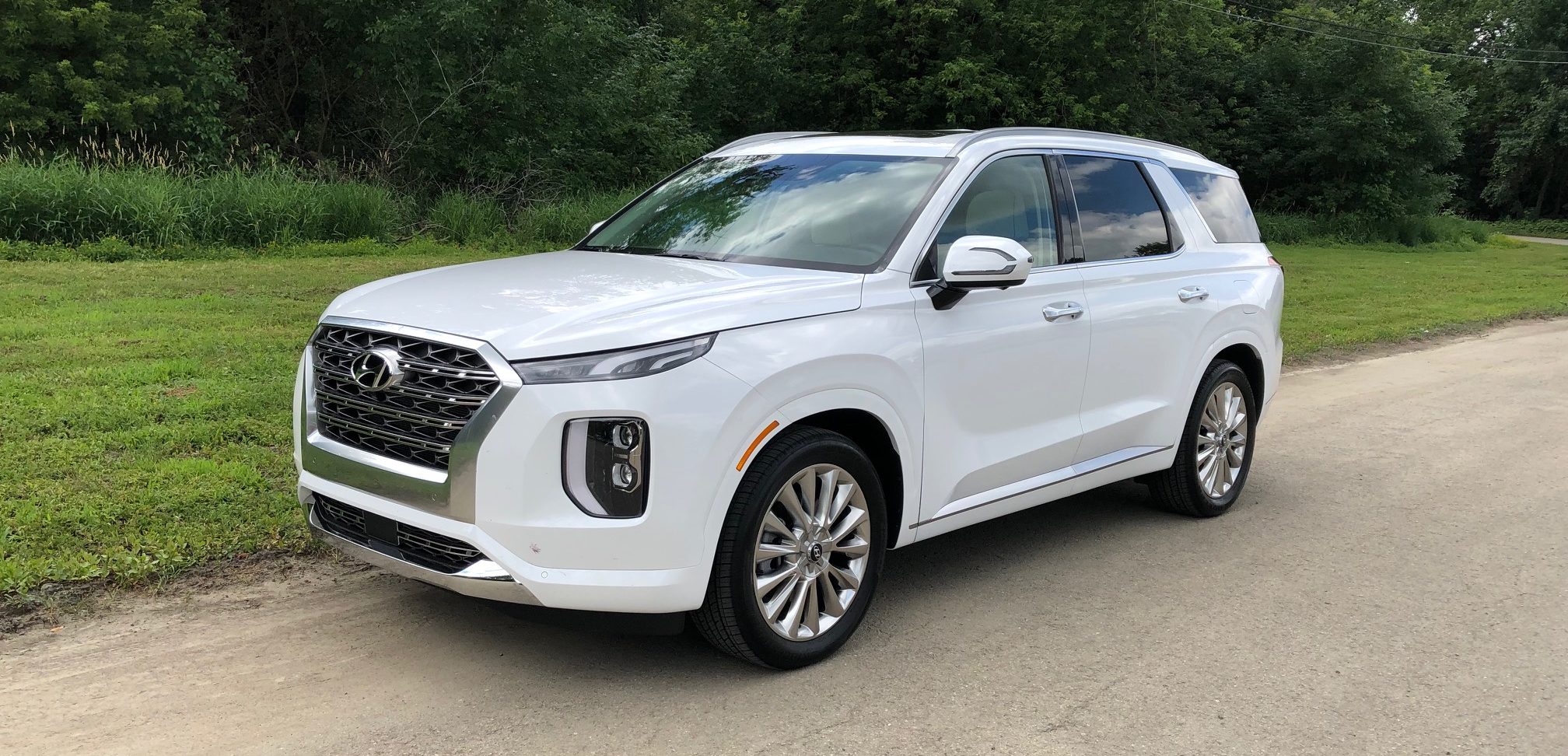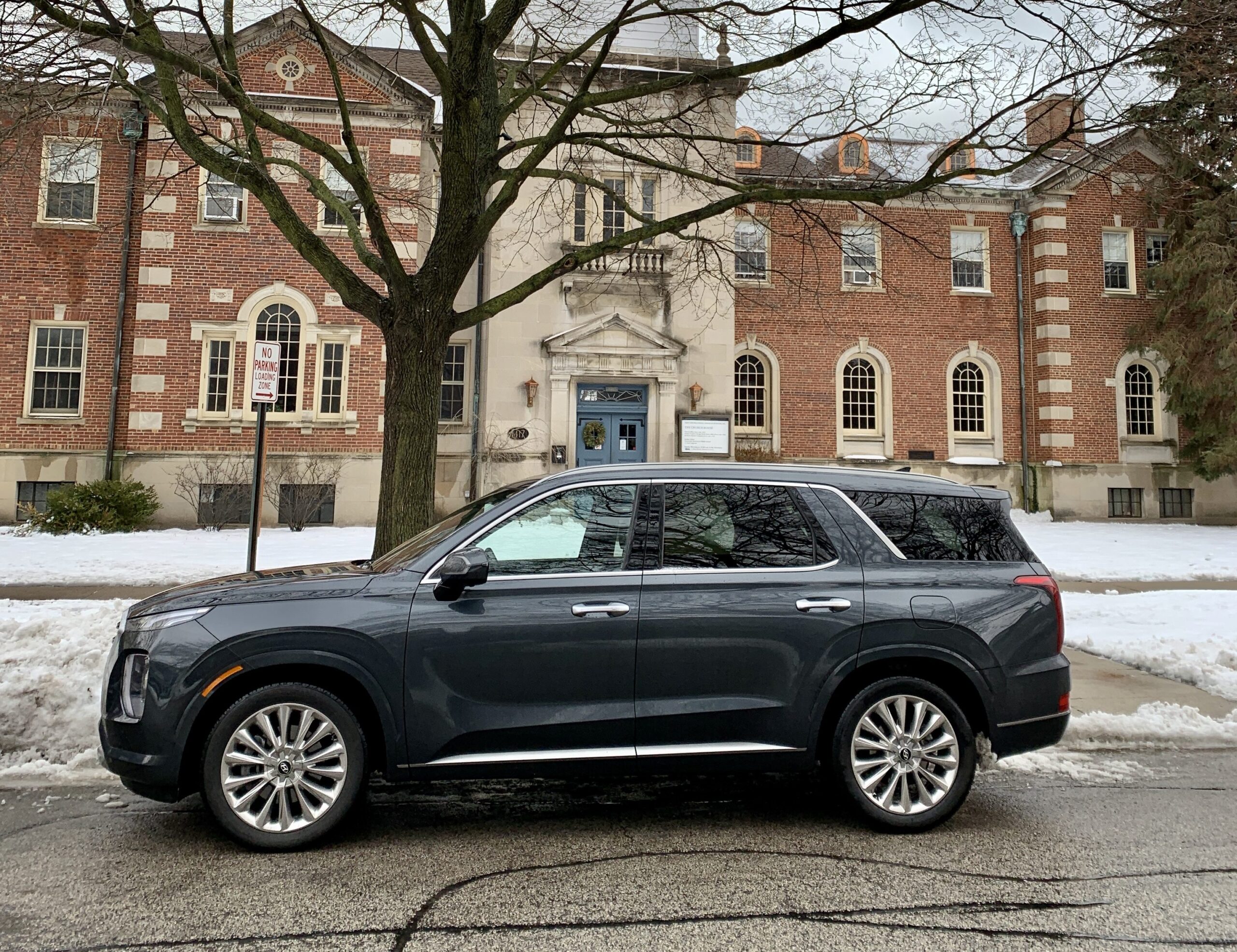2019 Hyundai Tucson Ultimate AWD
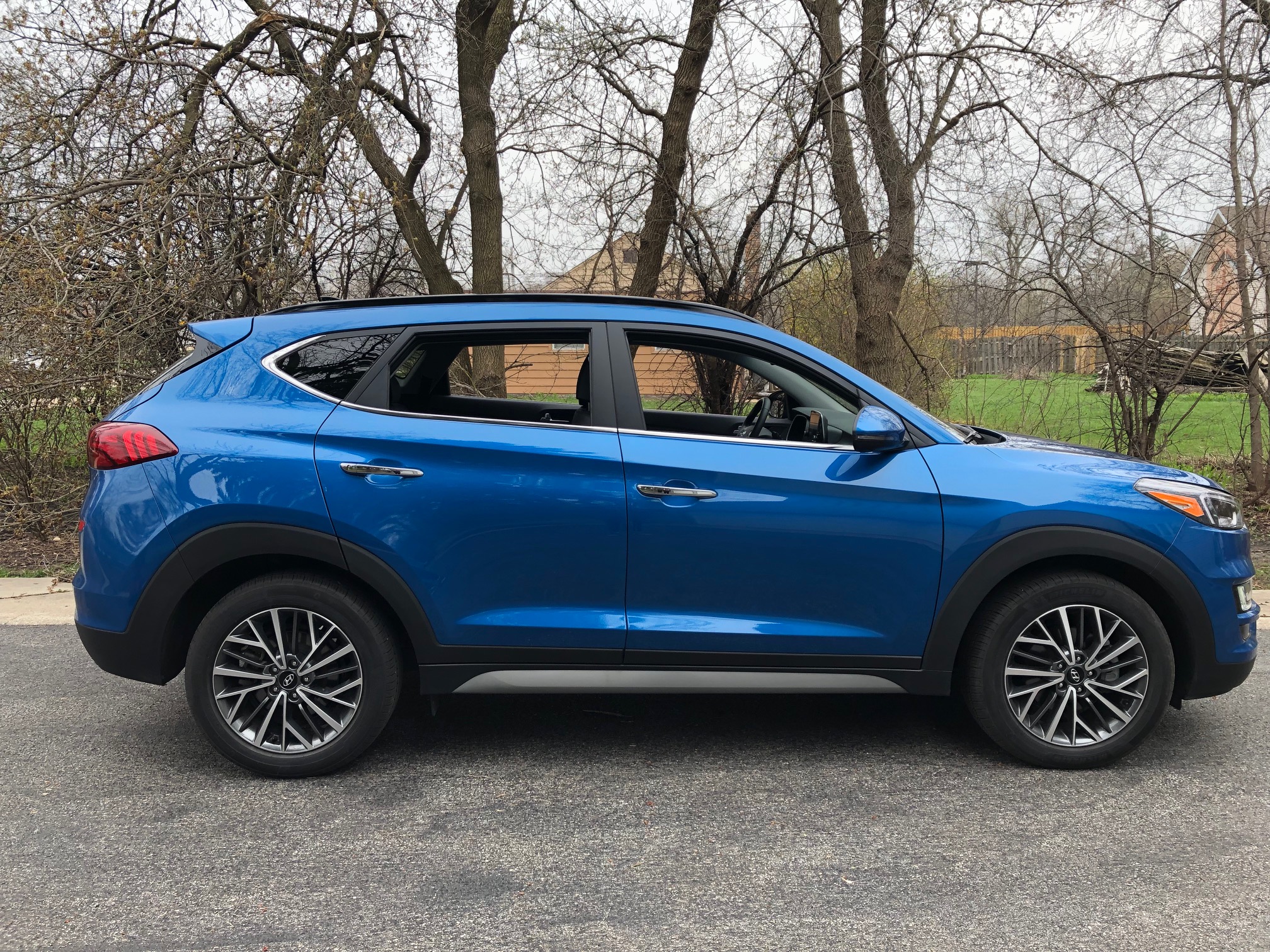
2019 Hyundai Tucson Ultimate AWD
Full disclosure: I was looking to replace the wife’s 6 year old Nissan Rogue with another similar sized SUV. So the first one I ordered up was the Hyundai Kona.
The Kona is an impressive little vehicle, loaded with all the new electronic safety features and technology. I would have been very happy for that car to reside in my garage. The wife liked it, so that helped.
Then I had a Santa Fe for a week. Another outstanding SUV, with all the amenities and great value. But the wife felt it was too large for her needs, so I got this new Tucson to test. The Tucson turned out to be the Goldilocks choice. It was juust right.
In 2016, this 3rd generation Tucson appeared but I wasn’t impressed with the 1.6 turbo engine it came with. It wasn’t very powerful, nor was it very smooth. In fact it was the first time a Hyundai disappointed me.
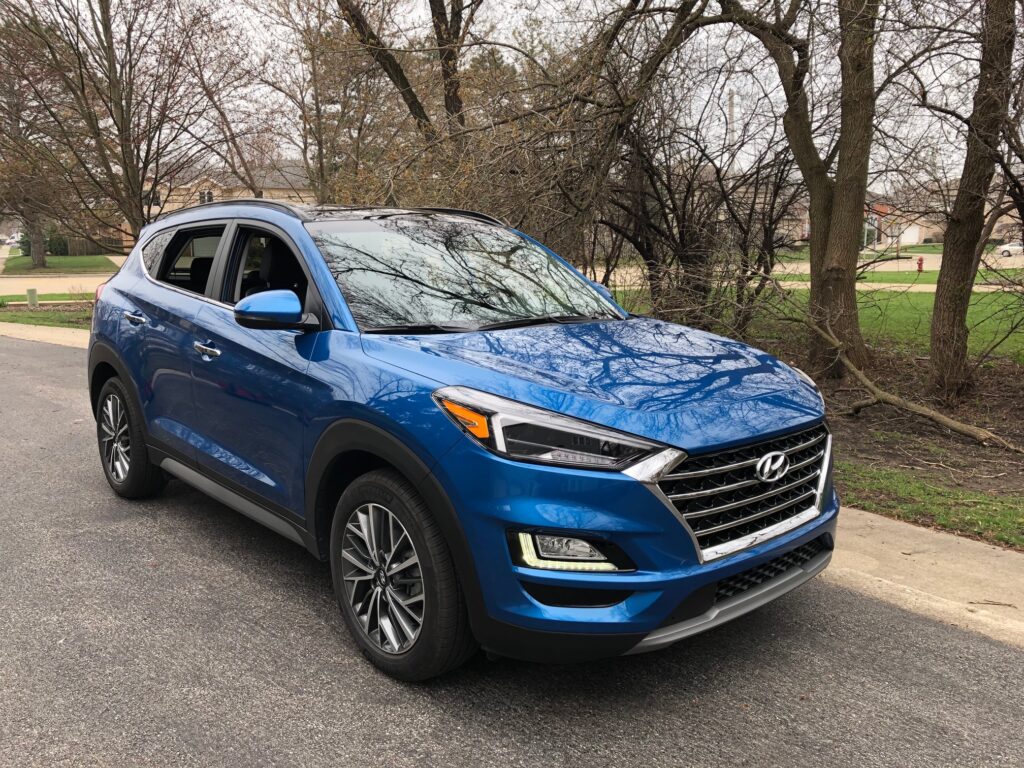
But in this year’s refresh, Hyundai dropped the 1.6 engine in favor of the new 2.4 –liter non-turbo engine, and that makes all the different in the world. It feels quick, responsive, quiet and smooth. Add in the exterior styling improvements, interior upgrades, and the ability to get all the safety and convenience features, and now this Tucson is a strong player in this segment.
Two engines are available this year, the naturally aspirated 2.4-liter four-cylinder with 181 horsepower and 175 lb-ft of torque, which is standard on the Ultimate trim level, and the base 2.0-liter four-cylinder with 164 horsepower and 151 lb-ft of torque. Both engines mate with the same smooth shifting 6-speed automatic transmission. Acceleration of the 2.4 won’t peel your eyelids back, but it’s quick enough to keep up with all traffic and to pull out on two lane roads and complete a pass quickly, or merge onto the highway. Hit the Sport Mode and you get the most out of the engine by holding gears longer before upshifts. The 2.4 engine gets 21 MPG City and 26 Highway, about mid pack with the competition.
The whoa pedal feels good, and the brakes are strong. Steering lacks some feedback, but it has some heft, and the Tucson shows good quick turn-in and feels precise and quick.
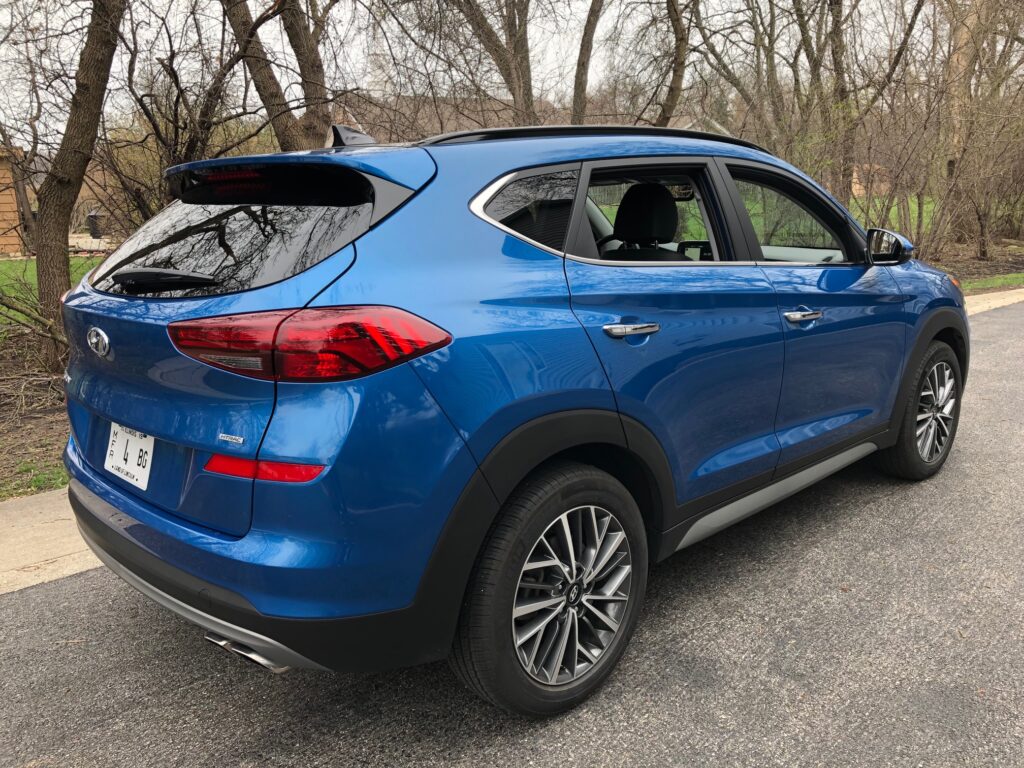
Handling is right up there with others in its class. Riding on 18” wheels, the vehicle feels stable, and without much body lean, making it feel balanced and even athletic. Stretches of twisting roads won’t intimidate the car or driver.
Hyundai engineers struck a good balance with the ride quality. The ride is comfortable on the highway, and in swallowing up bumps and poor pavement, and yet it doesn’t wallow or ever feel mushy. It is firm enough to give the driver the confidence to push it through turns when driving a bit more aggressively.
The 8” hi-res touchscreen sits atop the dash, and the infotainment system is excellent and easy to use with simple menus, and the HVAC controls are also simple to use. And with the addition of Apple Car Play and Android Auto give the owner all the options to use ones phone apps. Their Blue Link connected services also allow you to download the app, and use it for things like remote starting, locking and unlocking the car and other functions, including emergency notifications in case of an accident.
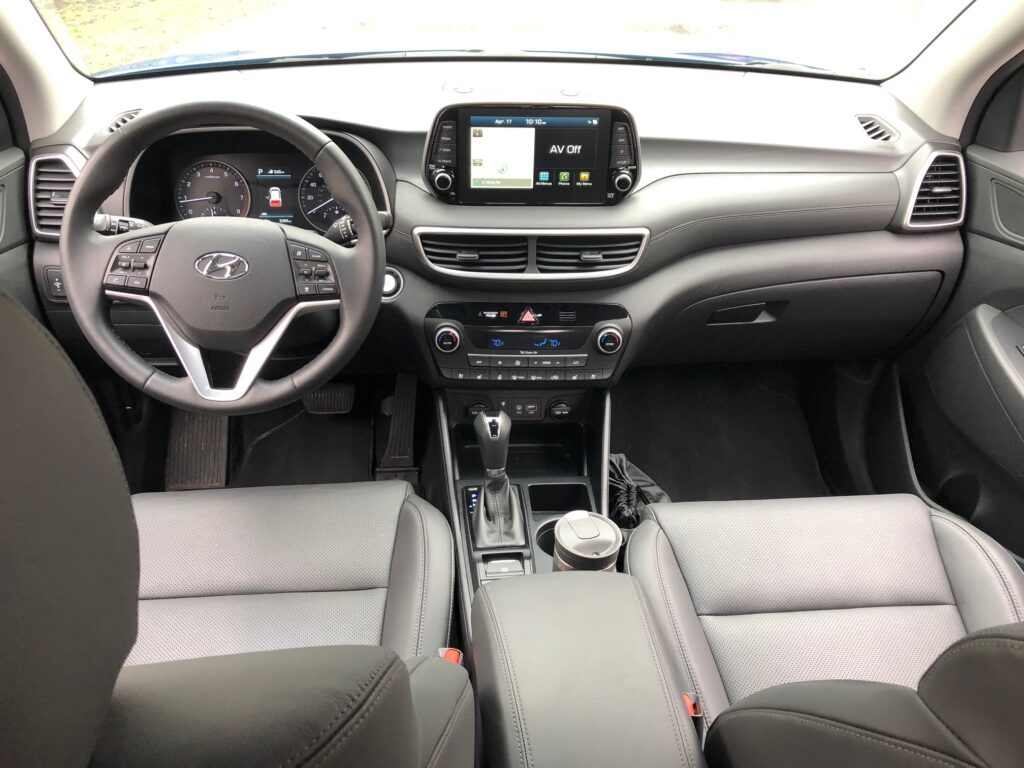
Most crossover SUV’s look alike and are hard to spot in a parking lot. The Tucson has revised front and rear design treatments giving it a more distinct look. The profile is a bit more muscular than the old model.
Generally speaking, crossovers all kind of look the same. At least the refreshed Tucson adopts some styling cues that make it look more expensive than before. It also brings the Tucson into the more modern Hyundai design language with updated front and rear fascia’s, as well as a reworked interior.
The tester came with black leather, and could use some brightening up. Fortunately, it also came with the huge panoramic moonroof, which helps dramatically to open up the cabin to more light and airy feeling. The heated and cooled front seats are comfortable, and the cool ventilated seats are the best in the business.
Head and leg room in both the front and back is very good, and the rear heated split bench seats are easy to lower and provide a lot of cargo room.
The cabin is very quiet and well insulated allowing the premium sound system to envelop the occupants with concert hall music quality. The front row offers a lot of good storage options, from the wireless charging tray at the bottom of the center stack, to the generous center console, large glove box, and door pockets. With the rear seats up, you get 31 cubic feet of cargo space, and 61.9 cubic feet with the rear seats folded flat. The electric liftgate opens automatically when you stand behind it for a few seconds, and has a push button close.
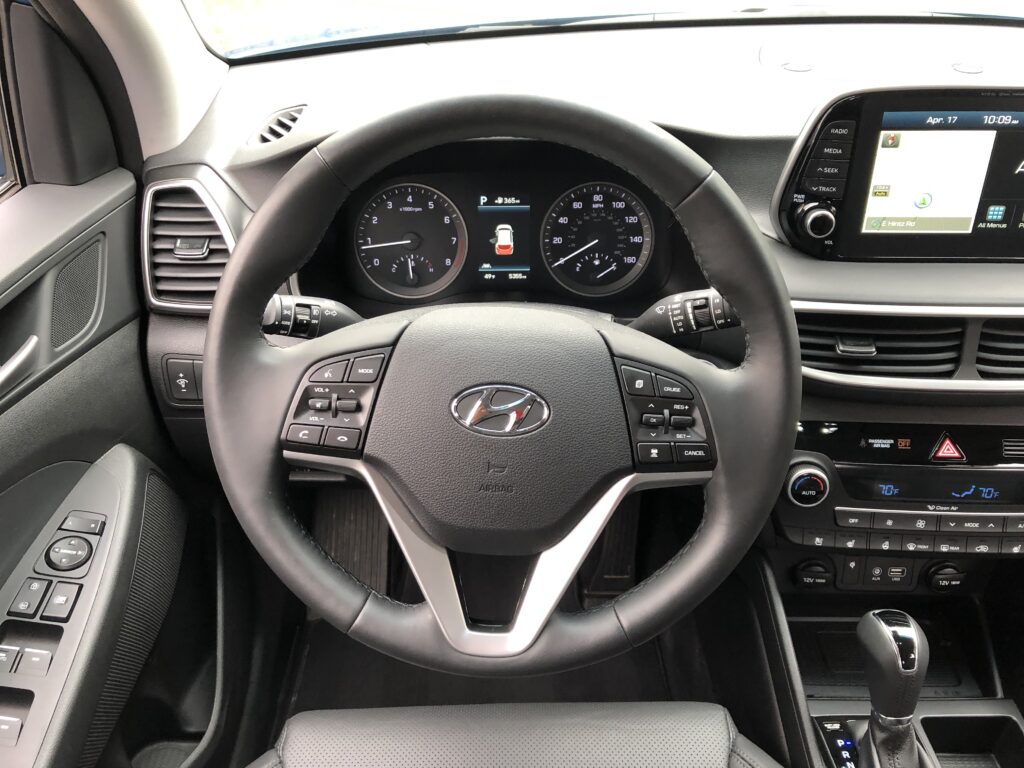
A brief list of standard tech features on the Ultimate trim included Lane Keep Assist, Blind Spot Collision Warning, Forward Collision Warning, Automatic Emergency Braking, Rear Cross Traffic Warning, a Surround View Monitor system, Tire Pressure Monitors for each tire, and so much more. The only option our test car had (or needed) was carpeted floor mats.
The Tucson also received the IIHS and NHTSA got top ratings for safety.
The Ultimate’s bottom line is $34,130 including freight, and that’s a lot of car for less money than most of the competition. The only problem I faced with the purchasing process came from my wife. I wanted the bright blue color, as shown in the photos. She wanted white. But the two choices of white colors only came with a beige interior. The wife drinks a lot of coffee in the car, (and therefore spills a lot of coffee in the car) so I told her that was out of the question. We settled on Silver. Hey, I’m not married 44 years without learning something along the way. Happy wife, happy life.
